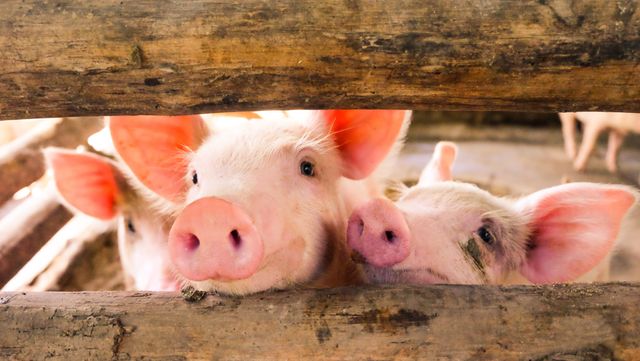2.1.1
Metaphors
Metaphor
Metaphor
A metaphor is a figure of speech in which you say something is another thing. You create an analogy to compare or liken the two things.


The moon is a balloon
The moon is a balloon
- The moon is a balloon, rising into the sky.
- In this phrase, you are comparing the motion of the moon rising in the sky to the motion of a balloon as it rises.
- When balloons rise into the sky, they usually move quite gently and steadily upwards.
- When the moon rises, it seems to move gently and steadily upwards.
- In this metaphor, it is the motion of both objects that we are looking at. Both objects move gently and smoothly upwards.


Anger flooding
Anger flooding
- Anger flooded into her brain.
- In this phrase, you are comparing the feeling of her sudden feeling of immense anger and the motion of water quickly flooding into an area and covering everything.
- In this metaphor, we get the image of anger covering up all the good feelings and good sense in the brain. The anger takes over, possibly causing damage to the girl’s life or relationships with other people


Sea of nameless faces
Sea of nameless faces
- I was lost in a sea of nameless faces.
- In this phrase, you are comparing the image of the sea (which is full of water molecules) to a huge crowd (which is full of people he doesn’t recognise).
- In this image, there are so many people’s faces that it’s the only thing we can see. Just like when we look at the sea and only see water, in this metaphor we can only see faces in the crowd.


Curtain of fog
Curtain of fog
- 'The curtain of fog'.
- In this example, you create the image of the fog falling down on the area as if it is a curtain being dropped over the place.
- This could also suggest that the fog is thick and difficult to see through.
Tips for Using Metaphors
Tips for Using Metaphors
A metaphor is a figure of speech in which you say something is another thing. You compare the qualities of two things within this.


Focus on the qualities of things
Focus on the qualities of things
- Focus on the qualities of the things you are comparing – what kind of picture are you trying to paint?


Focus on the comparison
Focus on the comparison
- Once you have figured out what kind of comparison you want to make, then think of something you can compare it to – something which clearly has that quality.
- For example, if I want to describe the disgusting and messy way someone eats, I could say that ‘he is a pig’.


Extend to make your ideas clearer
Extend to make your ideas clearer
- Metaphors leave a bit of room for interpretation – in the example of him being ‘a pig’, a reader could interpret it to mean that the person is messy, dirty or greedy.
- But if you want to make your ideas clearer, simply extend your metaphor: e.g. ‘He is a pig, shovelling his food greedily between his sloppy lips’.


Make clear comparisons
Make clear comparisons
- Remember that your comparisons must be clear to anyone who reads them – there’s no point in giving a metaphorical comparison that most people would not understand!
1Key Terms
2Language Techniques
2.1Language Devices
3Paper 1: Reading
3.1Paper 1: Reading - Section A
3.1.1Paper 1: Reading - Overview - Section A
3.1.2Paper 1: Reading - Answering Question 1
3.1.3Paper 1: Reading - Answering Question 2
3.1.4Exam-Style Questions - Paper 1: Reading
3.1.5Paper 1: Reading - Answering Question 3
3.1.6Paper 1: Reading - Answering Question 4
3.1.7End of Topic Test - Section A
3.1.8Exam-Style Questions - Paper 1: Reading
3.1.9Diagnostic Misconceptions - P1 Q1
3.1.10Diagnostic Misconceptions - P1 Q2
3.1.11Diagnostic Misconceptions - P1 Q3
3.1.12Diagnostic Misconceptions - P1 Q4 1
3.1.13Diagnostic Misconceptions - P1 Q4 2
4Paper 1: Writing
4.1Paper 1: Writing - Structuring Your Answer
4.1.1Paper 1: Writing - Overview - Section B
4.1.2Paper 1: Writing - Descriptive Writing
4.1.3Paper 1: Writing - Narrative Writing
4.1.4Paper 1: Writing - Answering Section B (option 1)
4.1.5Paper 1: Writing - Answering Section B (option 2)
4.1.6Paper 1: Writing - Answering Section B - Checklist
4.1.7End of Topic Test - Writing Section
4.1.8Exam-Style Questions - Paper 1: Writing
4.1.9Diagnostic Misconceptions - P1 Q5 1
4.1.10Diagnostic Misconceptions - P1 Q5 2
5Paper 2: Reading
5.1Paper 2: Reading - DAFORESTER
5.1.1Paper 2: Reading - Direct Address
5.1.2Paper 2: Reading - Alliteration
5.1.3Paper 2: Reading - Facts
5.1.4Paper 2: Reading - Opinions
5.1.5Paper 2: Reading - Repetition
5.1.6Paper 2: Reading - Exaggeration (Hyperbole)
5.1.7Paper 2: Reading - Statistics
5.1.8Paper 2: Reading - Triples (Rule of 3)
5.1.9Paper 2: Reading - Emotive Language
5.1.10Paper 2: Reading - Rhetorical Questions
5.1.11End of Topic Test - DAFORESTER
5.2Paper 2: Reading - Structuring Your Answer
5.2.1Paper 2: Reading - Overview - Section A
5.2.2Paper 2: Reading - Answering Question 1
5.2.3Paper 2: Reading - Answering Question 2
5.2.4Paper 2: Reading - Answering Question 3
5.2.5Exam-Style Questions - Paper 2: Reading
5.2.6Paper 2: Reading - Answering Question 4
5.2.7End of Topic Test - Section A
5.2.8Exam-Style Questions - Paper 2: Reading
5.2.9Diagnostic Misconceptions - P2 Q1
5.2.10Diagnostic Misconceptions - P2 Q2 1
5.2.11Diagnostic Misconceptions - P2 Q2 2
5.2.12Diagnostic Misconceptions - P2 Q4
6Paper 2: Writing
6.1Paper 2: Writing - Structuring Your Answer
6.2Types of Writing
6.2.1Paper 2: Writing - Article
6.2.2Paper 2: Writing - Essay
6.2.3Paper 2: Writing - Leaflet
6.2.4Paper 2: Writing - Letter
6.2.5Paper 2: Writing - Speech
6.2.6Paper 2: Writing - Review
6.2.7Paper 2: Writing - Travel Writing
6.2.8Paper 2: Writing - Diaries & Journals
6.2.9End of Topic Test - Types of Writing
6.3Writing to...
6.3.1Paper 2: Writing - Writing to Inform
6.3.2Paper 2: Writing - Writing to Inform - Example
6.3.3Paper 2: Writing - Writing to Explain
6.3.4Paper 2: Writing - Writing to Explain - Example
6.3.5Paper 2: Writing - Writing to Persuade
6.3.6Paper 2: Writing - Writing to Persuade - Example
6.3.7Paper 2: Writing - Writing to Argue
6.3.8Paper 2: Writing - Writing to Argue - Example
6.3.9Paper 2: Writing - Writing to Persuade vs Writing
6.3.10Paper 2: Writing - Writing to Advise
6.3.11Paper 2: Writing - Writing to Advise - Example
6.3.12End of Topic Test - Writing to...
6.3.13Exam-Style Questions - Paper 2: Writing
Jump to other topics
1Key Terms
2Language Techniques
2.1Language Devices
3Paper 1: Reading
3.1Paper 1: Reading - Section A
3.1.1Paper 1: Reading - Overview - Section A
3.1.2Paper 1: Reading - Answering Question 1
3.1.3Paper 1: Reading - Answering Question 2
3.1.4Exam-Style Questions - Paper 1: Reading
3.1.5Paper 1: Reading - Answering Question 3
3.1.6Paper 1: Reading - Answering Question 4
3.1.7End of Topic Test - Section A
3.1.8Exam-Style Questions - Paper 1: Reading
3.1.9Diagnostic Misconceptions - P1 Q1
3.1.10Diagnostic Misconceptions - P1 Q2
3.1.11Diagnostic Misconceptions - P1 Q3
3.1.12Diagnostic Misconceptions - P1 Q4 1
3.1.13Diagnostic Misconceptions - P1 Q4 2
4Paper 1: Writing
4.1Paper 1: Writing - Structuring Your Answer
4.1.1Paper 1: Writing - Overview - Section B
4.1.2Paper 1: Writing - Descriptive Writing
4.1.3Paper 1: Writing - Narrative Writing
4.1.4Paper 1: Writing - Answering Section B (option 1)
4.1.5Paper 1: Writing - Answering Section B (option 2)
4.1.6Paper 1: Writing - Answering Section B - Checklist
4.1.7End of Topic Test - Writing Section
4.1.8Exam-Style Questions - Paper 1: Writing
4.1.9Diagnostic Misconceptions - P1 Q5 1
4.1.10Diagnostic Misconceptions - P1 Q5 2
5Paper 2: Reading
5.1Paper 2: Reading - DAFORESTER
5.1.1Paper 2: Reading - Direct Address
5.1.2Paper 2: Reading - Alliteration
5.1.3Paper 2: Reading - Facts
5.1.4Paper 2: Reading - Opinions
5.1.5Paper 2: Reading - Repetition
5.1.6Paper 2: Reading - Exaggeration (Hyperbole)
5.1.7Paper 2: Reading - Statistics
5.1.8Paper 2: Reading - Triples (Rule of 3)
5.1.9Paper 2: Reading - Emotive Language
5.1.10Paper 2: Reading - Rhetorical Questions
5.1.11End of Topic Test - DAFORESTER
5.2Paper 2: Reading - Structuring Your Answer
5.2.1Paper 2: Reading - Overview - Section A
5.2.2Paper 2: Reading - Answering Question 1
5.2.3Paper 2: Reading - Answering Question 2
5.2.4Paper 2: Reading - Answering Question 3
5.2.5Exam-Style Questions - Paper 2: Reading
5.2.6Paper 2: Reading - Answering Question 4
5.2.7End of Topic Test - Section A
5.2.8Exam-Style Questions - Paper 2: Reading
5.2.9Diagnostic Misconceptions - P2 Q1
5.2.10Diagnostic Misconceptions - P2 Q2 1
5.2.11Diagnostic Misconceptions - P2 Q2 2
5.2.12Diagnostic Misconceptions - P2 Q4
6Paper 2: Writing
6.1Paper 2: Writing - Structuring Your Answer
6.2Types of Writing
6.2.1Paper 2: Writing - Article
6.2.2Paper 2: Writing - Essay
6.2.3Paper 2: Writing - Leaflet
6.2.4Paper 2: Writing - Letter
6.2.5Paper 2: Writing - Speech
6.2.6Paper 2: Writing - Review
6.2.7Paper 2: Writing - Travel Writing
6.2.8Paper 2: Writing - Diaries & Journals
6.2.9End of Topic Test - Types of Writing
6.3Writing to...
6.3.1Paper 2: Writing - Writing to Inform
6.3.2Paper 2: Writing - Writing to Inform - Example
6.3.3Paper 2: Writing - Writing to Explain
6.3.4Paper 2: Writing - Writing to Explain - Example
6.3.5Paper 2: Writing - Writing to Persuade
6.3.6Paper 2: Writing - Writing to Persuade - Example
6.3.7Paper 2: Writing - Writing to Argue
6.3.8Paper 2: Writing - Writing to Argue - Example
6.3.9Paper 2: Writing - Writing to Persuade vs Writing
6.3.10Paper 2: Writing - Writing to Advise
6.3.11Paper 2: Writing - Writing to Advise - Example
6.3.12End of Topic Test - Writing to...
6.3.13Exam-Style Questions - Paper 2: Writing
Unlock your full potential with Seneca Premium
Unlimited access to 10,000+ open-ended exam questions
Mini-mock exams based on your study history
Unlock 800+ premium courses & e-books